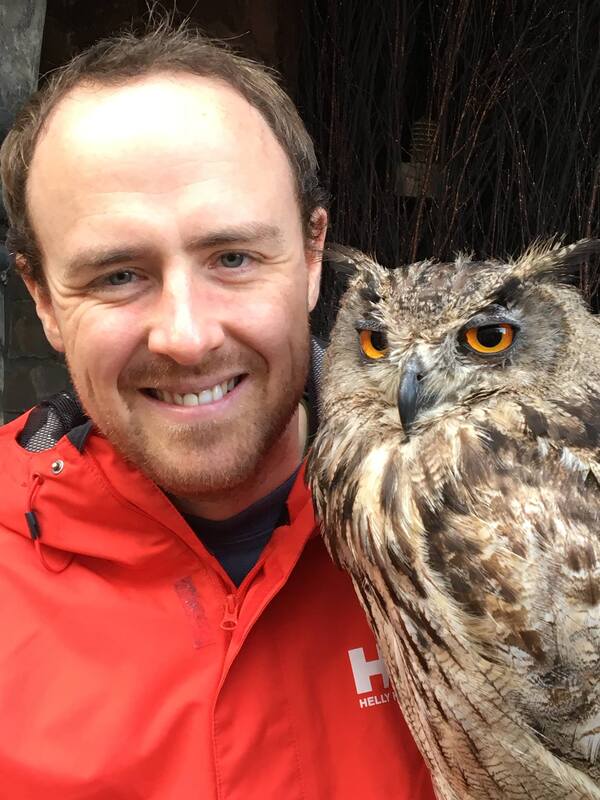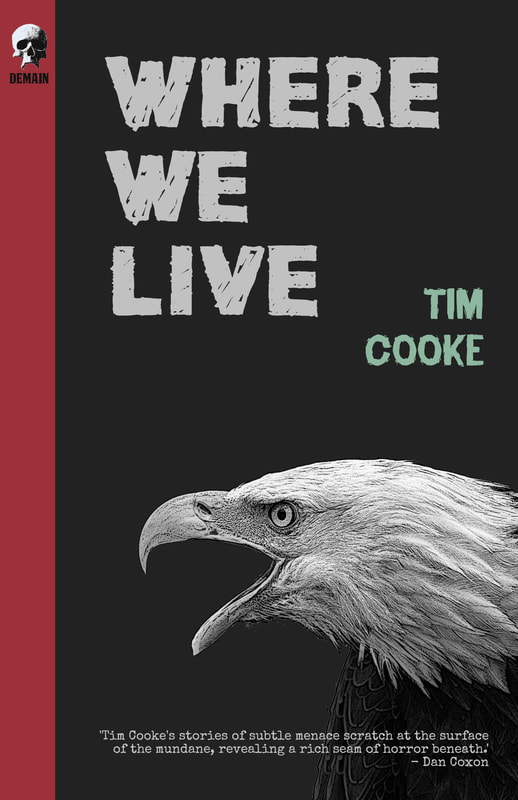|
|
|
Friday 4th September 2020 sees the publication of Tim Cooke’s short story collection, Where We Live (cover by Adrian Baldwin). As the lockdown was easing, Dean and Tim sat down and talked about it…
DEMAIN PUBLISHING: Hello Tim, welcome to DEMAIN. Glad to see you well and healthy. What strange times we currently find ourselves in, hey? Well, let’s get straight down to it…can you tell us a little about yourself and perhaps how (or why) you became a writer. TIM COOKE: Hello. It’s a pleasure to be here. I’ve always enjoyed reading. I studied literature at Sussex University and after completing an MA, I trained as a journalist and worked as a press officer. I wrote lots of articles on films and books, education and some other topics, but I always wanted to do something more creative. I wrote my first short story about five years ago and was lucky enough to get it published in a great magazine. I haven’t stopped since. I’m now doing a creative writing PhD at Swansea University – my project is a nonfiction collection, so quite different from my short stories. I also retrained as a teacher a few years ago. DP: And about Where We Live specifically? TC: My collection visits one character – though he could be described as three or four – at various points during his childhood and teenage years. He’s a bit of a rebel and is just navigating his way out from his family home into the wider world – or his local world, at least. My hope is that the stories convey something of the horror we experience as we grow and become independent, as we start to take risks and so on. Some stories are quite realistic, while others rely more on metaphor, incorporating elements of the supernatural. I’m interested in fairly mundane horror, I suppose – the horror of the everyday. The landscapes are vital in this. They’re the sorts of places that exist in so many provincial towns – like where I grew up – and might otherwise be ignored were it not for the young people who seek them out and use them for whatever purpose. They see potential in these places that others don’t – making them sites of change and growth, sanctuary and threat, within which is the kind of horror I’m looking for. At the same time, they’re often strange spaces with strong characters of their own – perhaps even their own motivations. I like the idea that place acts upon us. DP: So did you have to do much research when writing the stories? TC: Not really, to be honest. I seem to spend so much time doing research for my PhD that when I write fiction I’m a bit freer with it, which I really enjoy. Many of the stories are actually rooted somewhere in reality, particularly where the landscapes are concerned, so I haven’t had to do much in that regard – they are based on places I know quite well. DP: Ah, fair enough…Tim, when we talked about the stories you described them as ‘landscape punk’ and / or ‘ecogothic’ – two great terms but for those that don’t know these genres… TC: My stories are a real mix in terms of genre – a bit horror, a bit weird. Landscape punk is something that David Southwell, creator of Hookland, and Gary Budden have written about. I suppose it’s a kind of inclusive approach to writing about place and people’s interactions with landscape. I find it really invigorating. I think of it as in opposition to the fairly typical representations that we might find in areas of new nature writing, for example. For me, it’s about challenging those idealised versions of the land, presenting something new and weird instead – in that sense, it’s fertile ground for genre writers. I’m reluctant to expand too much on ecogothic, as it seems such a broad critical framework. I really like it as a genre label, though, and I recommend looking into it. Basically, in terms of my work, it’s linked to the role of nature and the blurring – or obliteration – of the line between the human and natural worlds. I read a brilliant essay on Algernon Blackwood from this sort of perspective, which had a significant impact on a couple of the stories in this collection. It’s an influence, really, as opposed to a defining feature. DP: I’ll check that essay out – as you know, I’m personally researching / writing a Norwegian horror script which could definitely be described as ‘ecogothic’…so from a creative point of view, what is your biggest success? TC: This, I think. I’ve been writing these stories – and others like them – for the last three years or so, but I never expected them to come together as a collection. I’d been working on a couple of other projects for most of that time and in between kept revisiting these characters and places. All of a sudden, I had enough material to make a book and now, thanks to you, that’s happened, which I’m thrilled about. Also, having work appear in publications like The Shadow Booth and Black Static, with authors I really love, has been great. Oh, and I’m very proud of a couple of long-form essays I’ve got coming out later this year. DP: That’s brilliant, and I’m glad DEMAIN could help. Which writers do you read and do they influence you? TC: I read quite a wide range of authors. I’ve recently enjoyed nonfiction books by Jenn Ashworth, Cameron Maria Machado, Marguerite Duras, Rob Doyle, Maggie Nelson and Geoff Dyer. I read lots of short story collections, too. Some of my favourites are by Eley Williams, Gary Budden, Sarah Hall, Dima Alzayat, Joanna Walsh and Claire-Louise Bennet. I love Niall Griffiths, Annie Ernaux, Deborah Levy, Cynan Jones, Edouard Louis, Lydia Davis, Gordon Burn, Ron Berry – too many to name. Focussing more on horror, I’m a huge fan of Aickman, Blackwood, James and Machen. Of modern writers, I particularly like Adam Nevill – The Reddenning was phenomenal – Lucie McKnight Hardie, Thomas Ligotti, Augustina Bazterrica, Dan Coxon and Andrew Michael Hurley – again, the list goes on. I thought Nicholas Royle’s translation of Vincent De Swarte’s Pharricide was exceptional. DP: Some great names / titles there – definitely worth checking out. Is there a book / film you’re particularly looking forward to? TC: I haven’t read Tim Lebbon’s Eden yet – I’m looking forward to that. Whatever’s next from Aliya Whiteley, Richard Gavin’s Grotesquerie – the cover is stunning and Undertow Publications are great. Influx Press and Dead Ink Books have just launched a collaborative imprint called New Ruins Books, which will publish work on the boundary between genre and literary fiction – I’m sure whatever they produce will be fantastic. In terms of film, I’m a bit of an old horror geek, but I’ve recently enjoyed The Witch and The Lighthouse by David Eggers, so I’m keen to see what he does next. Same goes for Jordan Peele and Ari Aster. DP: I love The Witch. Is there anything that scares Tim Cooke? TC: When I was younger I was pretty scared of growing up, and that’s what these stories are all about, so yes. DP: Creatively is there something you’re yet to achieve? TC: I want to produce work that I’m proud of and hopefully find some readers who like what I’m doing. Thank you so much for your time for Tim, all the best for Where We Live. Ebook is published on 4th September and available on all the Amazons.
2 Comments
codybecth
3/28/2022 12:11:35 pm
Great Article! Thank you for sharing this is very informative post, and looking forward to the latest one.
Reply
8/4/2022 06:36:54 am
Edirne baymak servisi en uygun fiyat ve en hızlı servis garantisi ile sizlerle. https://www.edirneklimaservisi.com/edirne-baymak-servisi/
Reply
Leave a Reply. |
CategoriesArchives
November 2023
AuthorDean M. Drinkel |


